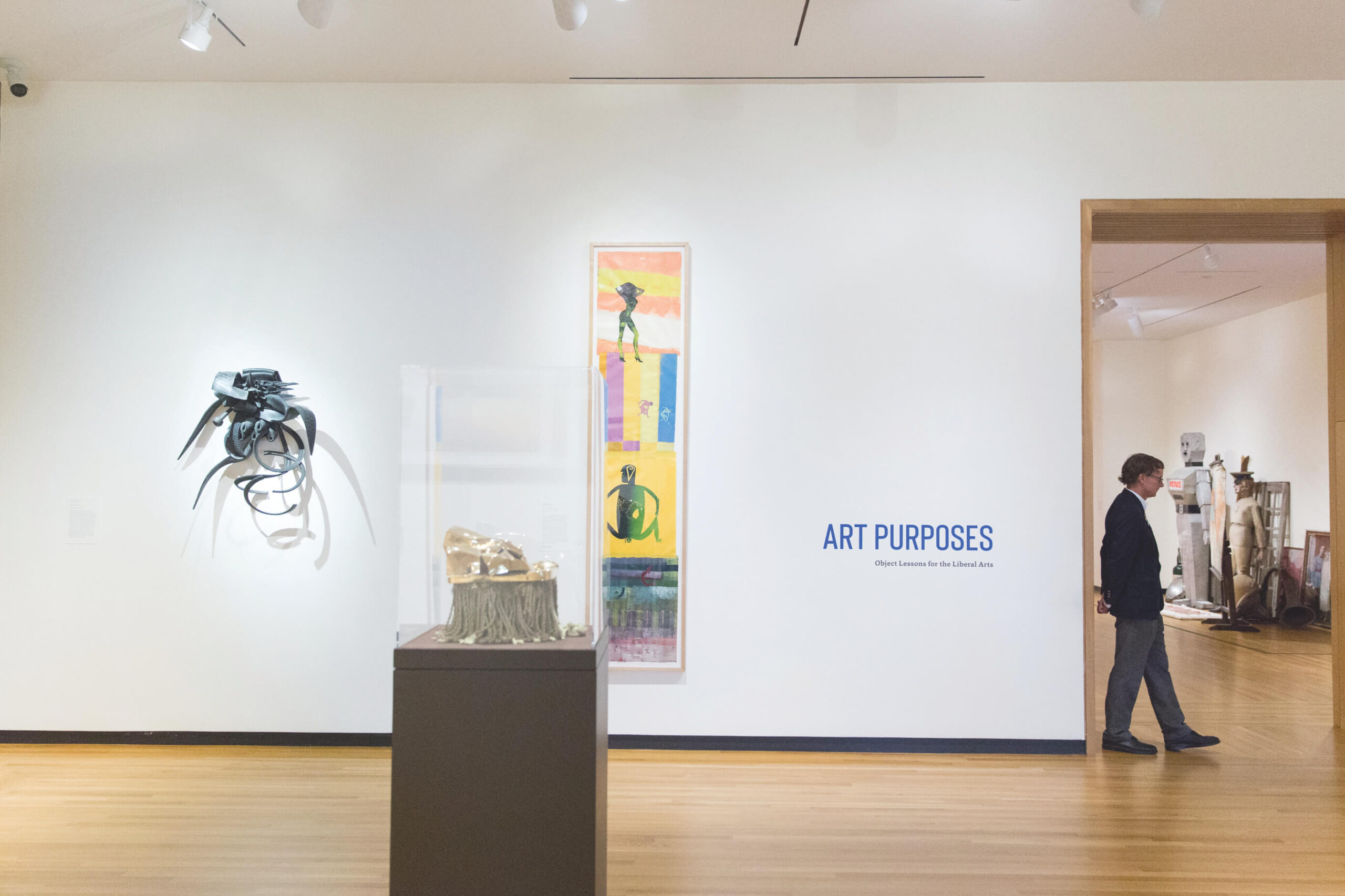Exhibition displays works from Museum’s permanent collection
September 6, 2019
 Ann Basu
Ann BasuCelebrating the 125th anniversary of the Bowdoin College Museum of Art (BCMA), the contemporary exhibit “Art Purposes: Object Lessons for the Liberal Arts” is all about fresh perspectives and the unfinished business of creation.
The exhibition displays notable works from the Museum’s permanent collection. It takes its name and ethos from the dedication inscribed under the museum’s grandiose rotunda, demanding that the building be used “solely for art purposes.”
Visitors enter the exhibition through a gateway of brightly colored papers, Jenny Holzer’s “Inflammatory Essays,” and their overwhelming gaudiness quickly gives way to more contemplative, hypnotic installations. There is an enormous effort to explore the interconnectedness of seemingly disparate art-makers and the ongoing nature of all these ancient, urgent conversations.
For former BCMA Curator Joachim Homann, exhibitions like “Art Purposes” reinforce the connection between the BCMA and the College.
“To think about art as separate from life—it’s something that kind of feels threatening and lifeless,” said Homann. “It’s a blessing to have a space that’s dedicated solely to artistic pursuits, but there’s also always the danger of losing connections with the community around it.”
Homann and the BCMA seek to strengthen exhibitions by working collaboratively with the community to attach these works of art to personal meaning. Essays accompanying the works do not only illuminate technical or historical significance, but draw connections that incorporate an emotional meaning to the work.
No work featured in “Art Purposes” predates the 1970s, though some have not seen the light of day since their acquisition. Many of these items confront the idea of what belongs in a museum and bring into question how those decisions are rendered and by whom.
According to Homann, the Museum’s collection was governed by a more conservative perspective for much of its history. However, recent acquisitions have begun to change this norm, including two large-scale works included in the exhibit. Guillaume Bijl’s “Composition Trouvée” engages irreverently and eclectically with geopolitics through over-sized toy robots and enormous maps. In Yukinori Yanagi’s “Loves Me, Loves Me Not,” repetitions of the sing-song children’s game Refrain take on a new meaning, printed in 14 languages on a carpeted backdrop of red chrysanthemums that evoke questions of Japanese national identity and wartime occupations.
The exhibition is centered on different “purposes”—Making, Exhibiting, Collecting, Observing and Representing. This means that there are many pieces that diverge from the norm in terms of medium, theme and artist.
In addition to aesthetically unconventional pieces, the exhibition highlights artists from demographics underrepresented in older parts of the museum’s collection. One such piece is Benny Andrews’ “Mrs. Viola Andrews—My Mother,” a mixed-media portrait of his mother as a cotton-picker.
“It reflects on an African American experience that’s typical for the American South from an inside perspective. In American museums, that is still incredibly rare. People struggle because museums are often seen as white spaces, and artists of color who are placing their work in these collections often feel that they have to insert themselves into a traditionally white space,” said Homann.
The heavy and challenging questions asked about race, governance, identity, war and poverty by the works in this exhibit are complemented and counterbalanced by bursts of humor and whimsy, a touch that Homann values greatly.
“Emotionally, the spectrum of these works is fantastic,” he said.
Audio essays allow wanderers to immerse themselves in these conversations. Homann hopes its questions stay with visitors on their journey through the rest of the museum.
“Think about how artists have questioned the traditions of art making, of gold frames,” said Homann. “Think about the long-term trajectories of art making.”

Comments
Before submitting a comment, please review our comment policy. Some key points from the policy: